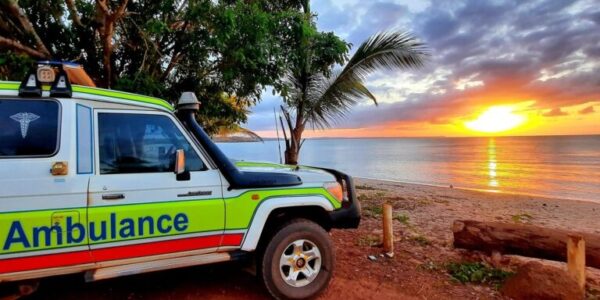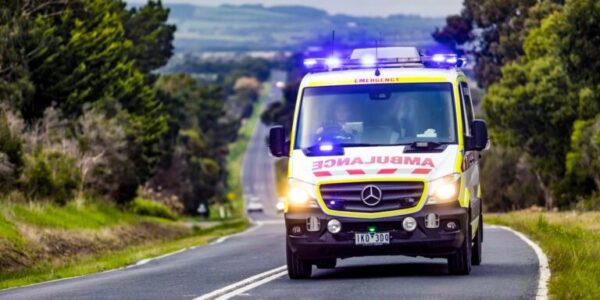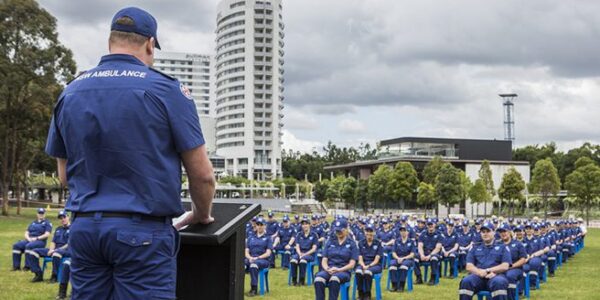Re-published 20th June, 2024
Paramedics play a critical role in providing advanced medical care and treatment to patients in a variety of emergencies. Highly skilled in their own right, there can be more than what meets the eye. Based on skillsets, rank and positions, there are many different types of paramedics, thanks to their differing levels of training and specialties. In this blog, we will provide you with an understanding of the different types of Paramedics in Australia, plus other medical roles in emergency services.
Why are there different types of Paramedics in Australia?
You may be surprised to learn that there are quite a few differences between ambulance services treatment based on the jurisdiction. Whilst there can be many differing reasons why, it mainly comes down to a Paramedic’s ‘Scope of Practice’ (SOP), which directly impacts their ‘Clinical Practice Guidelines’ (CPGs),
What are Scope of Practice (SOP) documents?
A Paramedic’s SOP can be used hand-in-hand with their CPGs. A SOP outlines directly what they can use/do to conduct clinical procedures. To provide a broad overview, it consists of the medication/drugs and equipment you can use, but also manual tasks (e.g. CPR is a manual task).
What are Clinical Practice Guidelines (CPGs)?
According to the Australian Government Department of Health and Aged Care, CPGs are ‘systematically developed statements to assist practitioners with decisions about appropriate health care for patients in specific circumstances’. To simplify this, they are guidelines based on a systematic review to support your decision, weighing up the positives and negatives of the treatment type on patients.
*Australian Government Department of Health and Aged Care (2024)
Why do CPG and SOP documents matter?
To Paramedics, adhering to these documents is pivotal. While the SOP outlines your boundaries in your role as a paramedic, the CPGs provide the roadmap to delivering safe, effective, and evidence-based care within those boundaries legally. As paramedics, you can find your treatment of patients being audited at times. Should you have deviated from your CPGs, you could be asked why and need to be able to satisfactorily justify why.
CPGs are openly available for the public to review across all Australian states and territories for state services. For your convenience, we’ve linked these below:
- Australian Capital Territory Ambulance Service CPGs
- Ambulance Tasmania CPGs
- Ambulance Victoria CPGs
- Queensland Ambulance Service CPGs
- St John Ambulance Western Australia CPGs
- New South Wales Ambulance CPGs
- St John Northern Territory CPGs
- South Australian Ambulance Service CPGs
Please be advised that your SOP will be determined by your employer, meaning if you work in the private sector for a private paramedic company they can alter.
How can I expand my SOP and CPGs?
To place it as simply as possible – education! The more you study, the more you can expand the scope and treatments you work to. The minimum qualification needed to hold and work under the title of a Paramedic, you will need to complete a Bachelor of Paramedic Science/Paramedicine (or similar). There are plenty of upskilling courses, certificates and degrees one can do to upskill into higher clinical positions, as outlined below.
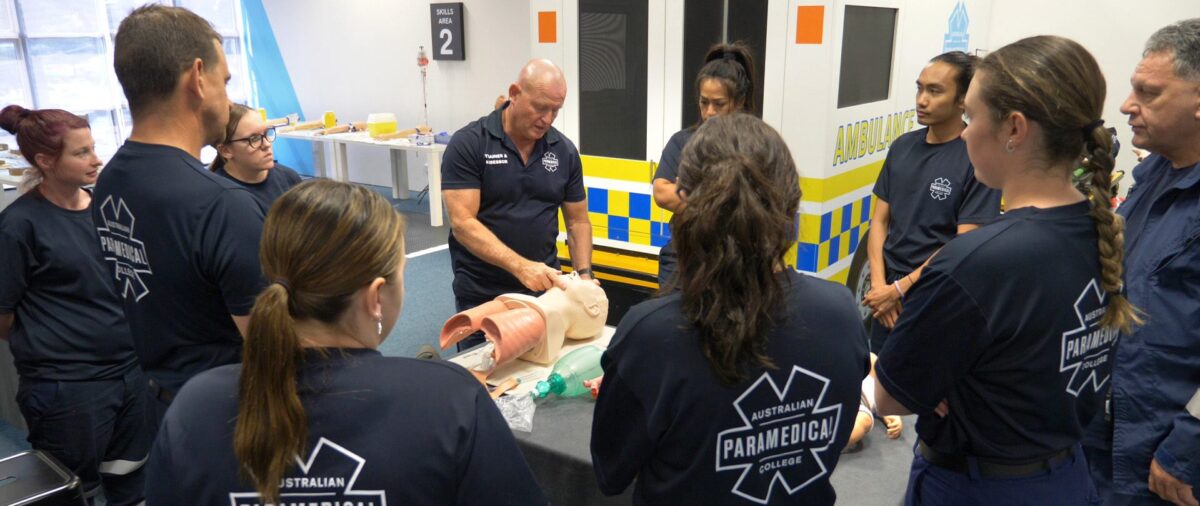
What are the different types of Paramedics in Australia?
In Australia, there are three main types of Paramedics:
- Paramedic –
- The most common type of Paramedic, providing emergency care and transport to patients.
- Extended Care Paramedic –
- Each holds additional training in advanced life support and can provide more complex medical treatment in the field.
- Intensive Care Paramedic –
- These Paramedics have more specialised training in intensive care and rehabilitation to provide ongoing medical support to patients.
But it doesn’t stop there, Paramedic titles vary in each state service. See below for a breakdown of the majority standing of Paramedic titles throughout Australia, broken down by the jurisdictional ambulance service.*
*All below roles/positions are referenced from the relevant jurisdictional ambulance service website (2024)
Title:
Paramedic Intern
Operating within:
✔ New South Wales Ambulance
✔ South Australia Ambulance Service
✔ St John Ambulance Western Australia
Description:
A Paramedic Intern has either recently graduated from their Bachelor of Paramedicine (or similar), or in the final year of their degree. They are to complete training before heading on-road and holding the tile of ‘Ambulance Paramedic’ (or similar).
Title:
Graduate Paramedic
Operating within:
✔ Queensland Ambulance Service
✔ Ambulance Victoria
✔ Ambulance Tasmania
✔Australian Capital Territory Ambulance Service
✔ St John Ambulance Northern Territory
Description:
A Graduate Paramedic works directly underneath appropriately qualified personnel before they become an Advanced Care Paramedic. In some states, they are required to complete the relevant training before going on road.
Title:
Medic
Operating within:
✔ St John Ambulance Western Australia
Description:
A Medic has graduated with a Bachelor of Paramedicine (or similar) and is required to have a minimum of 12 months experience in this role before applying to become a ‘Paramedic Intern’.
Title:
Ambulance Transport Officer
Operating within:
✔ St John Ambulance Western Australia
Description:
Ambulance Transport Officers provide specialised transport services and emergency health care for injured, sick and aged persons in pre-booked and on-demand calls. It is highly desired for you to hold a HLT51020 – Diploma of Emergency Health Care or Bachelor degree in Paramedical Science.
Title:
Registered Paramedic/Ambulance Paramedic
Operating within:
✔ Queensland Ambulance Service*
*All paramedics with QAS are Advanced Care Paramedics
✔ New South Wales Ambulance
✔ Ambulance Victoria
✔ St John Ambulance Western Australia*
*All paramedics with SJAWA are Advanced Care Paramedics
✔ Ambulance Tasmania
✔ Australian Capital Territory Ambulance Service
✔ St John Ambulance Northern Territory
✔ South Australia Ambulance Service
Description:
A Registered Paramedic or Ambulance Paramedic holds a Bachelor of Paramedicine (or similar) and completed the relevant workplace training before officially filling the position.
Title:
Bicycle Response Paramedic
Operating within:
✔ Queensland Ambulance Service
✔ New South Wales Ambulance
✔ Ambulance Victoria
✔ St John Ambulance Western Australia*
*Volunteer capacity only
✔ Ambulance Tasmania
✔ Australian Capital Territory Ambulance Service
✔ St John Ambulance Northern Territory
✔ South Australia Ambulance Service
Description:
Successfully filing the requirements of a Registered/Ambulance Paramedic, a Bicycle Response Paramedic responds to incidents on bikes, treating patients who don’t require transportation to hospital but require care until other resources arrive (if applicable).
Title:
Advanced Care Paramedic
Operating within:
✔ Queensland Ambulance Service
✔ Ambulance Victoria
✔ St John Ambulance Western Australia*
*Volunteer capacity only
Description:
Whilst differing per state, Advanced Care Paramedics have fulfilled the Registered Paramedic/Graduate Paramedic role for at least 2-3 years to have a more advanced skillset when providing care and transport to patients.
Title:
Intensive Care Paramedic
Operating within:
✔ New South Wales Ambulance
✔ Ambulance Tasmania
✔ Australian Capital Territory Ambulance Service
✔ St John Ambulance Northern Territory
✔ South Australia Ambulance Service
Description:
Intensive Care Paramedics hold similar positions as Advanced Care Paramedics. They hold a broader scope than those of Registered/Ambulance Paramedics, performing more advanced medical interventions and procedures.
Title:
Mobile Intensive Care Paramedic (MICA)
Operating within:
✔ Ambulance Victoria
Description:
A MICA Paramedic has a higher scope than a Registered/Ambulance Paramedic, holding a postgraduate qualification in Intensive or Critical Care. Their greater knowledge and experience mean that more efficient decisions can be made without further medical consultation from specialists.
Title:
Critical Care Paramedic
Operating within:
✔ Queensland Ambulance Service
Description:
A Critical Care Paramedic holds a Diploma in Intensive Care Paramedical Practice on top of their Paramedical Registration with at least five years of experience within the pre/out-of-hospital emergency sector.
Title:
Extended Care Paramedic
Operating within:
✔ New South Wales Ambulance
✔ Ambulance Tasmania
✔ South Australia Ambulance Service
Description:
Extended Care Paramedics are dispatched to emergency calls that require specialist assessment and care management in addition to a Registered/Ambulance Paramedic skillset.
Title:
Flight/Air Ambulance Paramedic
Operating within:
✔ Queensland Ambulance Service
✔ New South Wales Ambulance
✔ Ambulance Victoria
✔ St John Ambulance Western Australia
✔ Ambulance Tasmania
✔ Australian Capital Territory Ambulance Service
*Northern Territory and South Australia operate via non-state service.
Description:
Flight/Air Ambulance Paramedics are responsible for working to recover or stabilise a patient while in transport to a qualified medical facility. To fulfil positions as such, individuals may be required to hold registered paramedic qualifications, relevant postgraduate qualifications and at least five years of experience in-field.
Title:
Aquatic Paramedics
Operating within:
✔ Ambulance Victoria
Description:
Aquatic Paramedics hold the relevant qualifications to be a Registered Paramedic, with further training within aquatic environments.
Title:
Wilderness Response/Remote Rescue Paramedics
Operating within:
✔ Ambulance Victoria
✔ Ambulance Tasmania
Description:
Wilderness Response Paramedics or Remote Rescue Paramedics are trained to treat patients in remote areas. Often working alongside the State Emergency Service and Police Force, the qualifications needed are often a Bachelor of Paramedicine (or similar) and further education in specialist equipment and environments.
Other Medic and Patient Transport roles available
If you’re not 100% sure if becoming a Paramedic is for you, there are still plenty of other positions to consider in the emergency and non-emergency healthcare sector. Check some of them out below:
Patient Transport Officers are responsible for transporting stable patients between medical facilities or from their homes to a medical facility. They provide basic patient care during transport, such as monitoring vital signs and providing basic first aid.d.
Emergency Medical Technicians are trained to provide basic-to-advanced life support and emergency care to patients. EMTs may work alone, or under the direction of a Paramedic and assist in providing patient care. They are commonly employed by private ambulance services and event medical services, though some state ambulance services also maintain a workforce of EMTs.
Private/Event Medics hold a similar position to Emergency Medical Technicians and are responsible for providing medical care at public events, such as concerts, festivals, and sports events. They are commonly employed by private ambulance services and event medical services.
A Medical Emergency Services Officer (MESO/ESO) is typically responsible for medical care and sometimes also fire rescue, security, training and WHS on large industrial sites, particularly mine sites. They generally sit within the mine safety team.
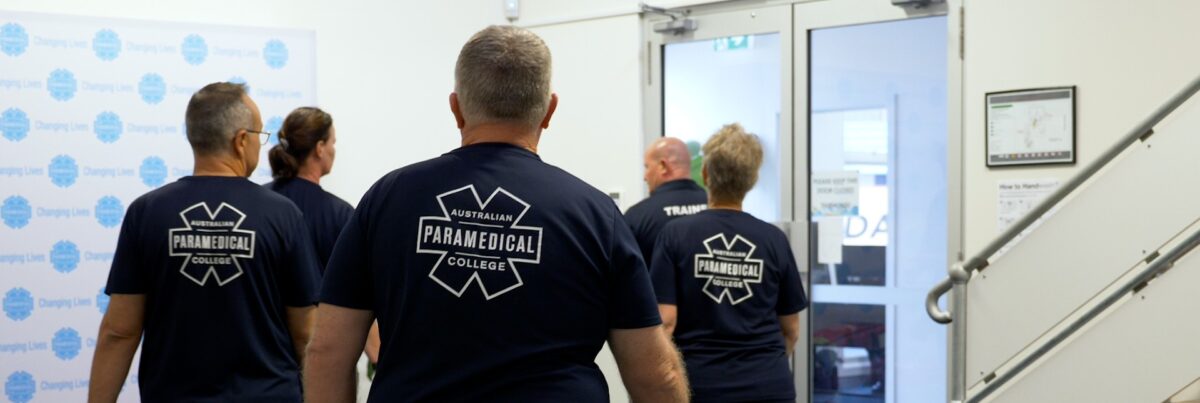
How to train as a Paramedic or Medic
Australian Paramedical College (APC) is Australia’s largest training provider for emergency and non-emergency healthcare training. Not only do we provide courses that allow you to be industry-ready as Patient Transport Officers, Emergency Medical Technicians, Event Medics and more, we also provide pathways for VET entry into university to become a Paramedic.
Click on any of the courses below to learn more about a career as a private Medic or Patient Transport Officer, or the button below to understand APC’s pathway to becoming a Paramedic:
- HLT31120 – Certificate III in Non-emergency Patient Transport
- APC’s Cert III is a great course for those who wish to pursue a career as a Patient Transport Officer, or even Ambulance Transport Attendant.
- HLT41120 – Certificate IV in Health Care
- Choosing to study APC’s Cert IV can provide you with the clinical skills to work as a Basic Life Support Event Medic or Emergency Medical Technician at sporting events, music festivals, competitions and more.
- HLT51020 – Diploma of Emergency Health Care
- Formerly titled as a Diploma of Paramedical Science, APC’s Diploma expands an individual’s skillsets in advanced airway management, cardiac arrest and ECG monitoring. Additionally, it offers a more comprehensive scope to administer drugs and medications in comparison to those who are Cert IV qualified. Students who choose to study the Diploma of Emergency Health Care can pursue further study at university to train as a Paramedic.
